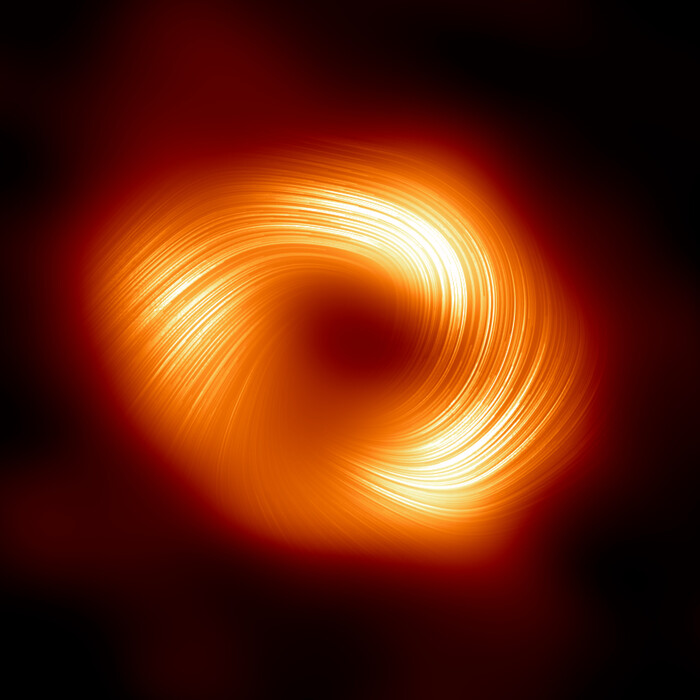Last year, at the stroke of 12 midnight on Christmas Day, a lone space probe perched on the surface of Mars captured one of the largest earthquakes ever detected on the Red Planet.
It was a very shallow earthquake.
Those responsible for this mission, InSight, led by NASA, alerted their colleagues in charge of MRO, another US probe that orbits the planet at about 300 kilometers high.
The images taken by this spacecraft located a new crater 150 meters in diameter in Amazonis Planitia, a vast plain in the northern hemisphere, about 3,000 kilometers northeast of the probe.
At the edges of the hole you could clearly see the shine of at least a ton of frozen water unearthed by the impact of an asteroid.
It was the first time that such an event had been recorded almost live.
Geophysicist Kim Doyeon is part of the team that analyzes the signals captured by InSight every day in search of new
marsquakes
.
“When we realized that we had detected the seismic waves caused by an impact, we went through the previous data and found another one that had happened just 94 days before the first one,” he recalls.
The orbiting probe also discovered in this case a crater of about 130 meters in Tempe Terra, 7,500 kilometers northeast of the ship.
Liliya Posiolova, a scientist at the MRO, highlights the importance of the finding: "These are the largest impacts ever detected by a seismometer and documented with images anywhere in the solar system."
“On Earth, the explosions in the atmosphere of the 1908 Tunguska meteorite or the 2013 Chelyabinsk meteorite had been captured, which were larger, but both burned in the atmosphere and did not leave a crater,” she highlights.
General view of the crater caused by the impact detected on Christmas Eve.NASA
Posiolova and Doyeon are the first authors of two studies that today describe the finding in the journal
Science
, a benchmark for the best world science.
NASA has explained the discoveries in a press conference held this afternoon Spanish time.
The Christmas Eve meteorite was between 5 and 12 meters in diameter, scientists calculate.
It left a crater 21 meters deep —like a seven-story building— and was able to release energy close to that of the atomic bomb that devastated Hiroshima in 1945. The magnitude of the earthquakes that caused this meteorite and the previous one was 4 and 4.1 on the Martian scale, similar to that used on Earth, explains Doyeon.
Most experts believe that if there is life on Mars, it has to be underground, safe from the high radiation that punishes the surface.
It's technically possible that these two impacts may have unearthed microbes, but there's no way to confirm this because the craters are thousands of miles from any robotic spacecraft on the planet.
bombs on the moon
In the early 1970s, NASA astronauts detonated bombs on the Moon to study the satellite's crust thanks to the shock wave that was transmitted through the ground.
The explosions left craters less than 30 meters deep.
Never before have natural tremors been detected beyond the Earth.
The two earthquakes captured on Mars are much more powerful than those recorded decades ago on the Moon and have propagated much faster through the planet's crust, which has made it possible to study the subsurface up to about 30 kilometers deep with unprecedented detail. .
The new results could clarify one of the biggest mysteries of the red planet: the so-called Martian dichotomy.
The two hemispheres of this planet are so different that they look like two different halves of oranges.
The south is a high plateau littered with meteorite impacts, while the north is a much lower, flatter region.
One of the current hypotheses is that shortly after Mars was formed, about 4.5 billion years ago, a huge asteroid over 1,000 kilometers in diameter burst the northern hemisphere, bringing out the magma and creating the current depression.
This favored that in this half of the planet there was a huge ocean.
Mars was a blue planet like Earth that, for reasons still unclear, lost almost all of its water and protective atmosphere.
View of the Cerberus Fossa on Mars obtained by the European probe Mars Express.DLR
The InSight probe landed near the equator of Mars in November 2018. Since then it has captured more than 1,000 earthquakes.
Until now, almost all of them had come from inside the planet, which has helped to explore its different layers vertically, just below the ship's sensors.
The results have confirmed that Mars has a similar structure to Earth, with a core of about 1,800 kilometers in radius, a mantle of about 1,500 and a crust of about 50 kilometers.
Earthquakes caused by asteroids, on the other hand, allow the composition of the crust to be studied in detail.
Surface seismic waves caused by the two 2021 meteorites spread in all directions.
On the flank closest to InSight they crossed only the northern hemisphere and on the other they circled the entire planet.
The speed of propagation of the seismic waves was very similar in both directions, which implies that the Martian crust has a similar composition in both hemispheres.
Simon Stähler, a geophysicist at the Swiss Federal Polytechnic School and lead author of the studies, explains that these data suggest that the dichotomy is not due to different compositions, but rather because the crust is thicker in the south—about 70 kilometers, similar to the one in the Himalayas, the highest mountain range on Earth— than in the north—about 30 kilometers, similar to that of Europe—.
“We still don't know what implications these results have;
now geologists will have to study them for months or years to clarify whether the dichotomy is due to an impact or internal processes of the planet, ”he highlights.
Volcanic activity
Most of the earthquakes captured by the NASA probe occurred in the Cerberus bears, a tectonic depression dominated by cracks in the ground about 1,000 kilometers long.
The place gets its name from the fearsome three-headed dog that guarded the entrance to Hell in Greek mythology.
The team has analyzed a swarm of more than 20 earthquakes in this area.
Most likely, they explain in a third study in
Nature
, is that they are due to magma infiltration.
This is a huge surprise, as Mars was thought to no longer be a planet with such activity.
“We believe that this volcanic activity has happened in the last 50,000 years, which in geological terms is just
yesterday .
”, emphasizes Stähler.
“This means that there may be activity again in the near future.
This region should be considered an active volcanic zone”, details the researcher.
All of these finds come just as InSight is about to expire.
After almost four years on the red planet, its solar panels are covered in fine Martian dust that threatens to leave it without power.
Stähler reckons he has a month to live, even less.
The team has tried shaking the panels and even throwing sand on them in hopes of cleaning them up, but nothing has worked.
The last hope is that a tornado will come along and wash away the encrusted dust, as happened with the
Spirit
and
Opportunity
rovers , though the chances are slimmer because InSight can't move.
Recreation of the meteorite impact on Mars with the location of the InSight probe. Doyeon Kim, Martin van Driel, Christian Böhm
Meanwhile, the bowels of Mars continue to roar.
Last May, the probe detected the largest earthquake to date;
the first with a magnitude of five.
"If it was due to an impact, it should have left a crater of about 200 meters, but the MRO has not seen anything," explains Stähler.
"It must have been a shallow earthquake in the crust, although we are still putting all the pieces of information together to know exactly what happened."
Antonio Molina, an expert in geology at the Center for Astrobiology in Madrid, highlights the importance of this work.
One of the aspects that he highlights is the detection of ice on the slopes of one of the craters.
"This is the closest ice found to the equator on Mars," he notes.
The finding is important because it shows that on Mars there is not only water at the poles, but also closer to the equator, even though the surface is extremely arid.
It is important data for manned missions and also to understand how Mars ceased to be a habitable planet and became an icy desert.
Jens Ormö, an asteroid impact expert, explains that, until now, meteorites of this size were thought to hit Mars once every ten years.
Even if the probe stops working soon, "the mission has been very lucky to capture two impacts in just one year," he points out.
You can follow
MATERIA
on
,
and
, or sign up here to receive
our weekly newsletter
.








